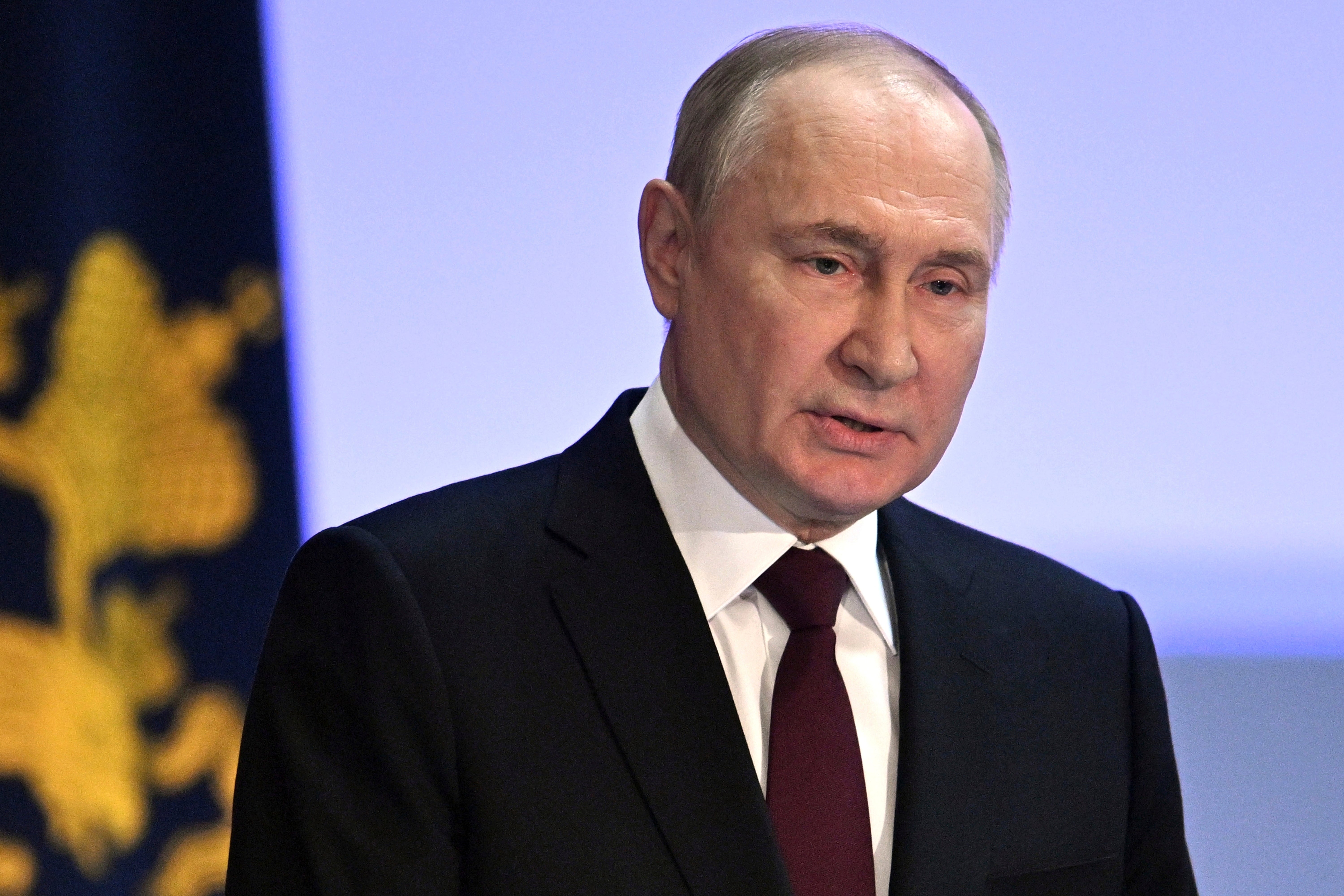It’s time the UK increased defence spending – to wartime levels
Nato must confront the hard choices arising from the hard realities of the most dangerous period since the end of the Cold War – and, with a question mark over America’s involvement, the UK must lead by example, says former diplomat and ex-cabinet secretary Lord Sedwill


On 4 April 1949, 12 nations signed the North Atlantic Treaty and founded the world’s most successful and enduring military alliance.
Seventy-five years later, Nato has 32 members, including a dozen democracies we rescued from Soviet domination. Our territory stretches from the Russian border to the Alaskan peninsula and from the Arctic to the Mediterranean.
We have three of the five permanent seats on the UN Security Council. With our Pacific allies, we represent 40 per cent of the world economy, half of international development aid and 60 per cent of global defence expenditure. That political, economic and military might could overwhelm any potential hostile combination.
So why are autocrats, with Vladimir Putin in the vanguard, so assertive?
As the Cold War approached its most perilous moment, in his inaugural speech in January 1961, President John F Kennedy pledged to “pay any price, bear any burden, meet any hardship, support any friend, oppose any foe”. Contrast that vigour with the weariness of his modern successors: the long and disorderly retreat from the post-9/11 wars, disengagement from the non-aligned global South, the uncertain response to Putin’s earlier aggression against Georgia and Ukraine, “nation-building at home”, “America First”, creeping protectionism against allies, and the dilution of the Article V guarantee of collective defence (paradoxically, invoked only once in support of the US, after 9/11).
There are counterexamples, like the muscular response to the Salisbury attack, action against the Houthis to secure international trade routes and, whisper it quietly, the assassinations of Osama bin Laden and Iran’s insurgent mastermind, Qasem Soleimani. Most important has been Western solidarity with Ukraine.
But, as the US Congress and some European capitals dither over further support, and Russia gradually gets the upper hand, the Taliban soundbite that “you may have the watches, but we have the time” continues to resonate. Our adversaries believe that, if they can weather the initial response, Western strategic patience will ebb.
When Kennedy spoke, most Nato allies made considerable sacrifices to invest in collective security. Trump puts it crudely but, today, even the most Atlanticist Americans warn that their taxpayers cannot be expected to subsidise a European social model they do not enjoy themselves. The US invests 3.5 per cent of national income in defence. The European average is barely half that, and with much less bang for every buck. Even the UK, Nato’s second military power, which sets an example by investing 2.25 per cent GDP, talks of increasing defence expenditure only when we can afford it. As autocrats advance, delay is a luxury we cannot afford.
So how should European Nato respond?
The immediate priority is Ukraine. Some Americans might see it as a faraway country of which they care little, but for Europe, it is vital to stop Putin now. Ukraine’s recent battlefield setbacks reflect both political hesitancy and practical constraints on defence supply chains struggling to meet Ukrainian requirements while replenishing national stocks.
The strategic answer is to upgrade defence industrial capacity to wartime levels. Meanwhile, Europe should run its own factories 24/7 and buy US and other weaponry and munitions for Ukraine, whether or not Congress funds the US to do so. That is a huge challenge, but a fraction of the cost we will face if Putin prevails.
In parallel, Europeans should tackle the fraying of the Western alliance. While no modern US president will “pay any price” to “support any friend”, and the isolationists are unreachable, most Americans will respond positively to real commitments to share the burden of collective security.
Trump’s threats and Nato secretary general Jens Stoltenberg’s skilful diplomacy induced more Europeans to meet the pledge to invest 2 per cent of GDP in defence. That commitment must now be met – but money alone isn’t enough.
European armed forces should be modernised and integrated through Nato across the five domains of sea, land, air, space and cyberspace. That means setting aside traditional boundaries between army, navy and air force, accepting that many prized traditional manned assets will become obsolete, and adopting at scale the model of the British-led Joint Expeditionary Force (JEF) with several Nordic and Baltic allies.
This goes beyond defence. Three years ago, I met G7 leaders in Cornwall and argued that we should reverse the drift to protectionism between allies, and match Nato’s military alliance with an economic one to respond collectively to crises or coercion, and develop resilient critical supply chains. This is particularly relevant as we also wrestle with Xi Jinping’s increasingly assertive China and seek to re-engage the global South. For that, our efforts to address the humanitarian catastrophe in Gaza are essential.
All this requires a combination of hard, soft and smart power. Including defence, the UK spends around 3 per cent of national income on national security. It should be 4 per cent. The aid budget should be back at 0.7 per cent and, as well as defence, there should be significant increases for our world-class diplomatic, intelligence and security networks.
With the UK leading by example, European leaders should make these commitments at Nato’s Washington summit in July, and the next Nato secretary general should be mandated to deliver them.
None of this is straightforward. Western leaders must confront – and explain to their electorates – the hard choices which arise from the hard realities of the most dangerous period since the end of the Cold War. The test is thus whether we can rediscover Kennedy’s confidence, commitment and courage when he positively welcomed “the responsibility to defend freedom in its hour of maximum danger”.
That test is a test of leadership. Can Nato at 75 meet it?
Sir Mark Sedwill is a former cabinet secretary

Join our commenting forum
Join thought-provoking conversations, follow other Independent readers and see their replies